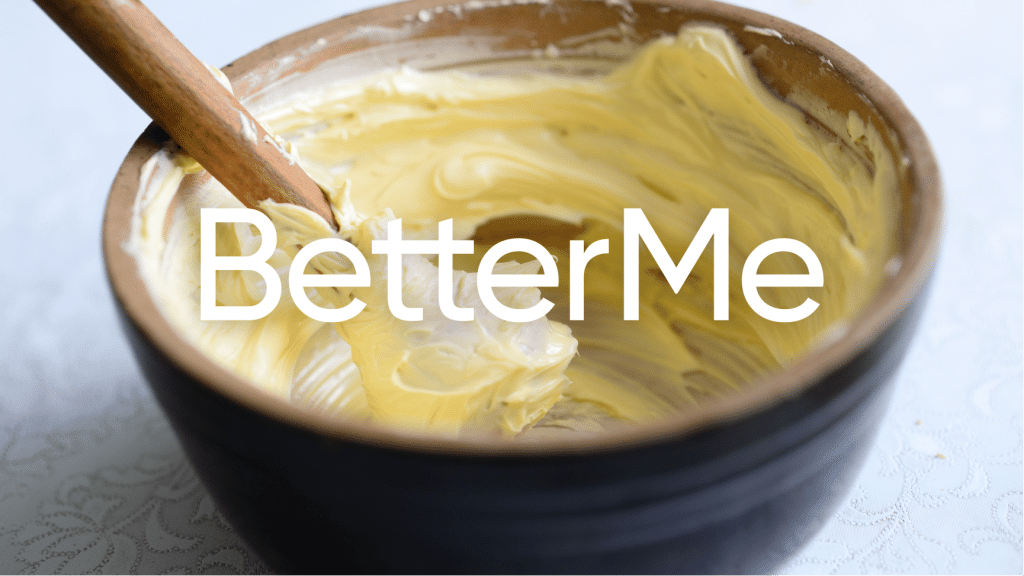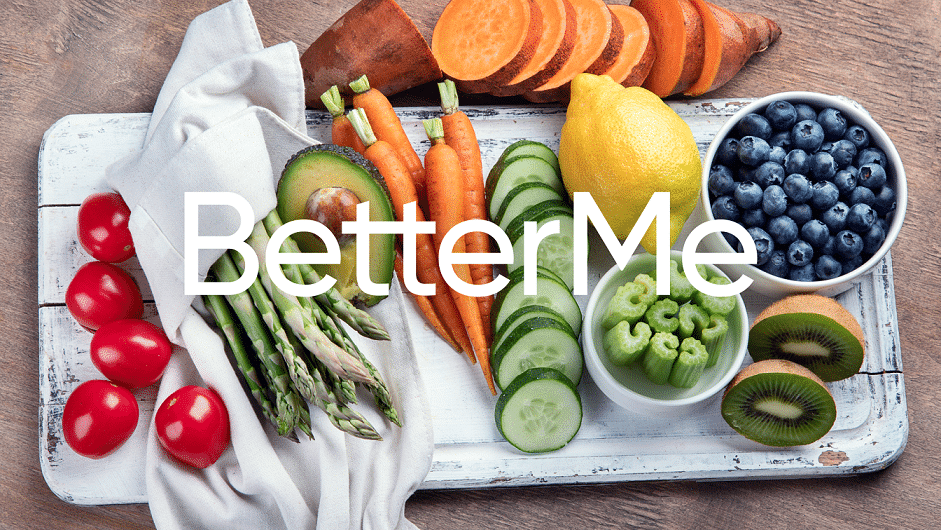Let’s face it—no matter how many fad diets give sugar a bad rap, desserts are so good when they hit the sweet spot. The truth is, not all sugars are equal. In fact, our bodies actually need certain types of sugar to give them energy and ensure proper functioning.
However, in the vast world of sugar, understanding the differences can be as complex as its molecular structure.
From naturally occurring sugars that are found in fruits and honey to the highly refined sugars that grace our breakfast cereals, there’s a surprising variety of sweeteners out there. There are also sugar substitutes that offer sweetness without the calories but with their own set of controversies.
This article will guide you through the sweet labyrinth of sugars and their substitutes and we’ll help you make more informed choices about the sweeteners you consume.
What Are The 4 Types of Sugar?
When it comes to sugar types, you’ll find different sources claiming there to be anything from 3-10 categories. That’s because sugar comes in many forms: natural, refined, and artificial. However, for the sake of simplicity, we’re going to stick to four basic groups:
Naturally Occurring Sugars
These include those that are found naturally in foods such as fruits, honey, and dairy products. They’re generally the least processed forms of sugar and are mostly found in their natural state. They include the three types of sugar in carbohydrates, which we’ll discuss shortly.
Refined Sugars
These are the common sugars that you will find in your grocery store, usually as granulated white or brown sugar, corn syrup, and high-fructose corn syrup. Refined sugars can also refer to anything that is made from white or brown sugar.
Artificial Sweeteners
These are the sugar substitutes that promise sweetness without the calories. Examples include aspartame, saccharin, and sucralose. The many sugar substitutes have their own set of controversies.
Added Sugars
These are sugars that are added to food products to make them taste better or give them a longer shelf life. They are found in almost every processed food, including breads, sauces, snacks, and beverages.
These are generally added to processed foods as a preservative or to enhance flavor. Examples include maltose, dextrose, and glucose syrup.
If you wish to free yourself from all the extra pounds that have been weighting you down for way too long, start using the BetterMe app and overhaul your entire life!
Different Types of Sugar Classified By Molecular Structure
When thinking of sugar, most people imagine granulated table sugar. However, from a chemical perspective, sugar is far more complex than that.
As a group, sugars are known as carbohydrates. Similar to proteins and fats, carbohydrates are an essential macronutrient, which means our bodies need them to function.
Carbohydrates are all chains of sugar that vary by their lengths. The three types of carbohydrates are (5):
Monosaccharides
These are the most basic form of sugars and they form the building blocks for other types of sugar.
- Glucose: Also known as dextrose, this is the main source of energy for our bodies.
- Fructose: Found naturally in fruits and honey, this is the sweetest of all sugars.
- Galactose: Not typically found alone, this combines with glucose to form lactose in milk products.
Disaccharides
These are formed when two monosaccharides are linked together.
- Sucrose: Commonly known as table sugar, this is composed of glucose and fructose and is extracted from sugar cane or sugar beet.
- Lactose: Known as milk sugar, this is made of glucose and galactose and can be found in all dairy products.
- Maltose: Formed from two glucose molecules, this is found in germinating grains such as barley, which is used in malting and brewing processes.
Polysaccharides
These are long-chain carbohydrates that play important roles in energy storage (such as starch and glycogen) and structural support (such as cellulose in plants and chitin in insects). They are also used in several industries including food, pharmaceuticals, and biotechnology due to their diverse functional attributes.
There are several types of polysaccharides and each has unique properties and flavors. Here are some of the most common ones:
Starch
This polysaccharide is composed of a large number of glucose units and serves as the primary form of energy storage in plants. In our diet, we consume starch in foods such as potatoes, rice, and wheat.
Glycogen
Glycogen is often referred to as animal starch and is the way our bodies store excess glucose for later use. It is primarily stored in the liver and muscles.
Cellulose
This is a structural polysaccharide that makes up the cell walls of plants. As a dietary component, it is indigestible by humans but forms an important part of dietary fiber.
Chitin
Similar in structure to cellulose, chitin can be found in the exoskeletons of insects and crustaceans, and the cell walls of fungi. It isn’t a typical part of the human diet, but is used in some dietary supplements and is important in several industries.
Pectin
Found in the cell walls of fruits and vegetables, pectin is used as a gelling agent in cooking, particularly when making jams and jellies.
Read more: No-Sugar Bread Recipes For Healthy, Guilt-Free Snacking.
Different Types of Sugar Classified by Physical Form
A simpler, non-chemical way of classifying sugar is by its physical form. Everyone is familiar with the granulated white or brown sugar that is used in baking, but sugars come in many different physical forms, including liquids, powders, and blocks.
Granulated Sugar
This is the most common form of sugar and is often used in baking and everyday cooking.
Caster Sugar
This is a finer version of granulated sugar, dissolves more easily, and is typically used in meringues, custards, and sponge cakes.
Confectioners Sugar
This is also known as powdered sugar and is granulated sugar that has been ground to a fine powder and mixed with a small amount of cornstarch to prevent caking. It is often used for icings and frostings or dusted over desserts.
Pearl Sugar
Pearl sugar is characterized by its large, pearl-like crystals and does not melt at typical baking temperatures. It is often used for decoration on pastries and Belgian waffles.
Sanding Sugar
This is another decorative sugar that has large, coarse crystals that sparkle when they catch the light. It is often used to add sparkle and crunch to baked goods.
Cane Sugar
As the name suggests, this is sugar that is derived from sugarcane. Any type of sugar can be cane sugar, but you’ll often see products marketed as cane sugar or raw sugar that are less refined and have a larger grain size than granulated sugar.
Demerara Sugar
This is a type of cane sugar with large, crunchy grains and is pale amber in color. It has a slight toffee flavor and is often used in tea or coffee or sprinkled on top of baked goods.
Turbinado Sugar
Similar to demerara, turbinado sugar is made from the first pressing of the sugarcane and is characterized by its flavor of light molasses.
Brown Sugar (Light and Dark)
Brown sugar is granulated sugar that has varying amounts of molasses added back into it. The color and flavor intensify when more molasses are added.
Muscovado Sugar
This is a dark, partially refined brown sugar that has a strong molasses flavor.
Is There Healthy Sugar?
Well, this is complicated. Whole foods containing naturally occurring sugars such as fruits, vegetables, and dairy provide essential nutrients such as vitamins and minerals that the body needs to stay healthy.
Whole food sources also contain fiber, which helps you feel full and can help with digestion and potentially protect against certain diseases (3).
At the same time, foods containing added refined sugars are generally heavily processed, contain fewer nutrients, and can contribute to weight gain and health problems if excessive amounts are consumed (6).
However, it’s important to remember that no sugar or individual food is inherently “bad” or “good”. It’s all about finding a balance and being mindful of your overall diet. Moderation is key.
BetterMe is your fast-track ticket to a long-lasting weight loss! Tailor your fitness journey and maximize your results with just a couple of swipes!
What Is Natural Sugar?
Natural sugar refers to sugars that occur naturally in foods. For example, these sugars can be found in fruits (fructose) and milk products (lactose).
Unlike added sugars, which are incorporated into food during preparation or processing, natural sugars typically come in whole-food form together with other nutrients, fiber, and various beneficial compounds.
For example, despite their sugar content, fruits are incredibly healthy as they’re also full of water and fiber, which help you feel full and prevent overeating (3). The same is true of dairy products such as milk and cheese, which contain lactose but also provide essential nutrients such as calcium and protein.
When we are advised to limit our sugar intake, this means added sugars, rather than the naturally occurring sugars in fruits, vegetables, dairy, and other whole foods.
Which Sugar Is Bad For You and Why?
An entire body of research exists surrounding the health effects of sugar, but it’s important to remember that this research is often inconclusive. Some studies have even suggested that certain kinds of sugars can be beneficial in certain contexts.
That being said, there is strong evidence that suggests that added sugars, or refined sugars, are bad for your health when they are consumed in excess. This is because foods containing added refined sugars generally contain relatively few essential nutrients in comparison to the amount of calories they contribute to your diet (6).
Furthermore, as they taste sweet, people tend to consume more of them without being aware of how many calories they are consuming.
Consuming excess calories from too much added sugar has been found to be linked to higher risks of obesity, type 2 diabetes, and other chronic illnesses. It can also contribute to cavities, tooth decay, and heart disease if consumed in excess (6).
Added sugars often sneak into unsuspecting foods including crackers, sauces, and some beverages.
Consuming too much hidden sugar has been linked to weight gain, diabetes, and other health problems (7). It is important to read labels carefully and look out for the presence of added sugar, even in seemingly “healthy” foods.
Read more: The Applesauce Recipe No-Sugar For When You Need A Sweet Treat.
FAQ
What type of sugar is in honey?
Honey primarily consists of two types of sugar: fructose and glucose.
These simple sugars, or monosaccharides, make up the majority of the composition of honey, with fructose being slightly more prevalent. The sugars in honey are easily absorbed and used by the body, which makes honey a quick source of energy. Although it is naturally occurring, honey is still considered an added sugar due to the way it is used.
What type of sugar is sucrose?
Sucrose, which is commonly known as table sugar, is a disaccharide. This means that it’s composed of two monosaccharides, glucose and fructose. Sucrose is extracted from sugar cane or sugar beet and is widely used in food processing due to its sweet taste and versatility.
How much sugar should people with diabetes consume per day?
The amount of sugar people with diabetes should consume each day varies depending on individual circumstances, including the type and severity of diabetes, physical activity level, and overall diet.
However, the American Heart Association recommends limiting added sugars to no more than 6 teaspoons (25 grams) per day for women and 9 teaspoons (38 grams) per day for men (4). It is essential that people with diabetes carefully monitor their carbohydrate and sugar intake and consult with a qualified healthcare professional for personalized advice.
What are the different types of sugars and how are they used by the body?
There are many types of sugars that can generally be classified into three categories: monosaccharides, disaccharides, and polysaccharides.
Monosaccharides such as glucose, fructose, and galactose are simple sugars. Glucose is the primary energy source for cells, fructose is metabolized in the liver and occurs naturally in fruits, and galactose, when combined with glucose, forms lactose.
Disaccharides such as sucrose, lactose, and maltose are composed of two monosaccharides. Sucrose, or table sugar, provides energy and sweetness, lactose can be found in dairy products, and maltose is present in some grains and is used in fermentation.
Polysaccharides such as starch and glycogen are complex carbohydrates that are made up of many glucose units. Starch is found in foods like potatoes and rice and is broken down into glucose for energy. Glycogen is how the body stores excess glucose for later use.
Every sugar type plays a distinct role in the body and is processed differently. It is important to maintain a balanced intake of these various types of sugars as part of a healthy diet.
The Bottom Line
Understanding the different types of sugar and the roles they play can be a key factor in managing a healthy diet and lifestyle. From the simple sugars that are found in honey and fruits to the complex carbohydrates in our everyday meals, sugars play a vital role in our body’s energy management.
For people with specific dietary needs, such as those with diabetes, an awareness of sugar content is even more important. You should remember that while sugar is an essential energy source, it should be consumed in moderation, and wherever possible, natural sources of sugar that are present in whole foods are typically the healthier choice.
DISCLAIMER:
This article is intended for general informational purposes only and does not address individual circumstances. It is not a substitute for professional advice or help and should not be relied on to make decisions of any kind. Any action you take upon the information presented in this article is strictly at your own risk and responsibility!
SOURCES:
- Artificial sweeteners and cancer risk: Results from the NutriNet-Santé population-based cohort study (2022, pubmed.gov)
- Artificial Sweeteners: A systematic review of metabolic effects in youth (2010, nih.gov)
- Health benefits of dietary fiber (2009, pubmed.gov)
- How much sugar is too much? (n.d., heart.org)
- Physiology, Carbohydrates (2023, pubmed.gov)
- Relationship between Added Sugars Consumption and Chronic Disease Risk Factors: Current Understanding (2016, nih.gov)
- The sweet danger of sugar (2022, harvard.edu)















